Figs (Ficus spp.) are a large group of plants represented by climbers, shrubs, and trees. A number of these trees start life on a branch of a tree to eventually strangle the host by their aggressive aerial roots. Fig plants bear tiny male, female and gall flowers inside a hollow receptacle, the syconium, commonly referred to as the fig and the pollination of the flowers make a fascinating story LINK. So a fig is not a fruit, nor is it a berry, as commonly referred to by birdwatchers. It can be considered a compound fruit as the receptacle bears numerous fruits inside. The images below show the figs of Ficus fistulosa growing from the trunk (left) and that of F. religiosa in long-section to show the fruits inside (right)
Fig trees when in fruits attract plentiful birds. The classical tree with local birdwatchers is the large Benjamin fig or waringin (Ficus benjamina) growing at the summit of Bukit Timah hill. And for a long time birdwatchers were ecstatic when the tree was in fruits LINK. Hordes of them flocked to it to marvel at the different species of birds at and around the tree. Some of the birds were eating the figs, others were more interested in the insects associated with the tree. Yet others were not at the tree but around the summit, or even flying through, like raptors and swiftlets. Such a list, although useful in a very limited way, makes no ecological sense unless there are qualifications as to the reasons why the birds were there in the first place.
R Subaraj was the first to point out the need to associate the birds with the reasons they were there and he helped sort out the species to make it more ecologically useful LINK. Yong Ding Li LINK, the author of the list and a young birdwatcher then, in his comment to the post, agreed that ecological data were important, just as important as lists. He further noted that “…the birdwatching community at large, inclusive of casual observers have big roles to play in this aspect. However, i think much of the time many of us are constrained by personal inadequacies to make just mere listing of the species present, which does not do real justice to what is being observed in front of our eyes“ LINK.
Unfortunately, “personal inadequacies” continued to persist among local birdwatchers. And it was left to ornithological students LINK to first document how the different birds manipulate the figs. Bird photographers and camera-toting birdwatchers soon followed, as elaborated below.
At the forefront of such documentation was Dato’ Dr Amar-Singh HSS, a birdwatcher based in Ipoh, Malaysia who contributed a series of posts on how flycatchers, especially the Orange-bellied Flowerpecker (Dicaeum trigonostigma) tearing pieces from a Ficus consociata fig (above left) LINK, as well as how the Brown Barbet (Calorhamphus fuliginosus hayii) mashed the fig of F. villosa prior to swallowing (above right) LINK.
Then there was Dr. Redzlan Abdul Rahman, another Malaysian birdwatcher, who documented the Yellow-vented Bulbul (Pycnonotus goiavier) swallowing figs of F benjamina (below left) LINK.
Local birdwatchers like Johnny Wee contributed his observation on the Coppersmith Barbet (Megalaima haemacephala), squashing figs from the bodh tree (Ficus religiosa) before swallowing (above right) LINK and photographer Ingo Waschkies photographed the Great Hornbill (Buceros bicornis) swallowing figs LINK.
So we now know how birds eat figs: peck on it to take small bites, take chunks from it, squash and swallow the entire fig or simply swallow the fig whole. Obviously this feeding behaviour varies with the different species of birds as well as the species of fig plants – depending on the gape of the birds and the size of the figs.
YC Wee
Singapore
December 2012



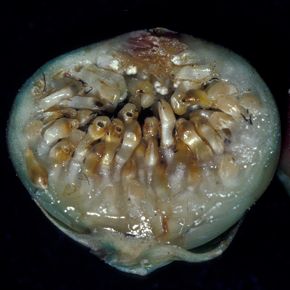
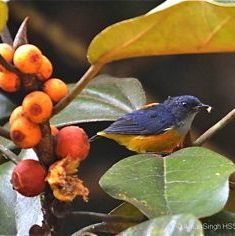
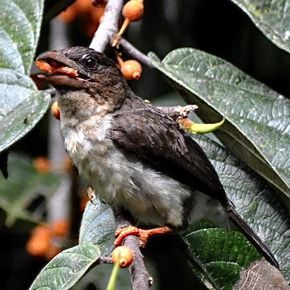
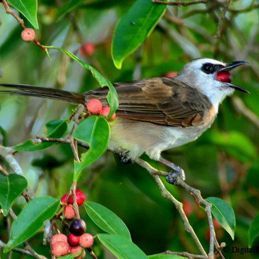
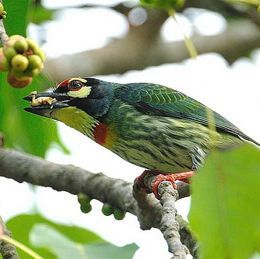







One Response